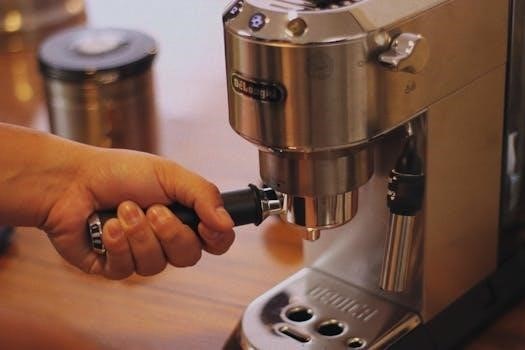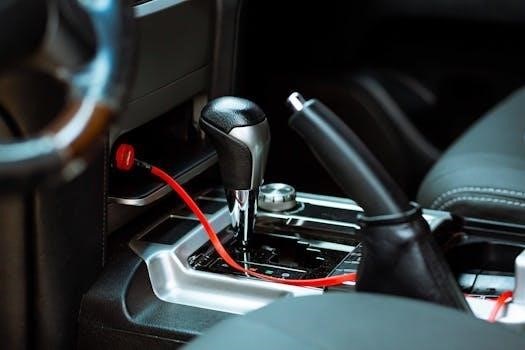
G35 Automatic to Manual Swap⁚ A Comprehensive Guide
Considering a manual transmission swap for your G35? This comprehensive guide will walk you through the entire process․ We’ll cover everything from parts needed to potential challenges, providing a clear roadmap for your conversion project․
Understanding the Scope of the Swap
Before diving into the G35 automatic to manual transmission swap, it’s crucial to grasp the project’s full scope․ This isn’t just a simple transmission replacement; it’s a comprehensive conversion involving numerous mechanical and electronic components․ You’ll need to source parts from a manual G35, potentially including the transmission, differential, hardlines, clutch and brake pedals, master and slave cylinders, and shift linkages․
Furthermore, wiring and ECU considerations are paramount for seamless integration․ The complexity also dictates whether a DIY approach or professional installation is more suitable․ Consider your mechanical expertise, available tools, and budget constraints․ A thorough understanding upfront will ensure a smoother and more successful swap, preventing unforeseen issues and costly setbacks along the way․ Finally, remember this swap applies to coupe models․
Parts Required for the Conversion
Successfully converting your G35 from automatic to manual requires careful parts sourcing․ This section outlines essential components, distinguishing between parts sourced from a donor car and new parts for optimal results․
Essential Components from a Manual Donor Car
Securing a manual donor car is highly recommended for a G35 automatic to manual swap․ Key components to salvage include the complete manual transmission assembly (ideally a CD009 from a 350Z)․ Don’t forget the clutch and brake pedal assembly, crucial for manual operation․
Furthermore, extract the clutch master and slave cylinders, along with the hydraulic lines connecting them․ Acquire the rear differential to match the manual transmission’s gear ratio․ Gather all necessary hardware, shift linkages, and the transmission control module (TCM), even though it may need modification․
Wiring harnesses associated with the manual transmission are also vital, simplifying the electrical integration․ Finally, consider the driveshaft, as the automatic and manual versions may differ in length, ensure compatibility with the manual transmission․ A donor car minimizes compatibility headaches․
New Parts to Consider Purchasing
Even with a donor car, certain new parts are highly recommended for a successful and reliable G35 manual swap․ A new clutch kit, including the clutch disc, pressure plate, and throw-out bearing, ensures optimal performance and longevity․ Consider an upgraded clutch for increased power handling if planning future modifications․
Replace the flywheel with a new or resurfaced unit, crucial for proper clutch engagement and preventing vibrations․ Fresh transmission fluid, specifically formulated for manual transmissions, guarantees smooth shifting and protects internal components․ New pilot bushing is inexpensive insurance․
Consider replacing the rear main seal while the transmission is out for prevent future leaks․ Upgrade the clutch line to a stainless steel braided line․ Purchase new hardware like bolts and nuts for a secure and reliable installation․ A short shifter enhances the driving experience and provides more precise gear changes․

Step-by-Step Swap Process
This section details the complete G35 automatic to manual swap procedure․ We will guide you through each step․ It includes disassembly, installation, and necessary adjustments for a successful conversion․
Preparation and Disassembly of the Automatic Transmission
Before diving into the swap, meticulous preparation is key․ Begin by disconnecting the battery and securing the G35 on jack stands for safe access․ Drain the automatic transmission fluid, consulting the service manual for the correct procedure and disposal methods․
Next, disconnect all electrical connectors and linkages attached to the automatic transmission․ Carefully label each connector to avoid confusion during reassembly․ Remove the driveshaft, exhaust components, and any other obstructing parts․
Support the automatic transmission with a transmission jack․ Unbolt the transmission from the engine, taking care to manage its weight as it separates․ Lower the transmission and safely remove it from under the vehicle․
Finally, disconnect and remove the automatic shifter assembly, and any related brackets or hardware․ These steps are critical for a clean installation of the manual transmission components․ Keep all removed components organized․
Installation of the Manual Transmission and Related Components
With the automatic transmission removed, it’s time to install the manual transmission․ Begin by installing the clutch and flywheel onto the engine, ensuring correct alignment and torque specifications․ Install the clutch master cylinder and run the hydraulic lines․
Carefully lift the manual transmission into place using a transmission jack․ Align the transmission with the engine and bolt it securely․ Install the manual transmission shifter assembly and connect the shift linkage․
Next, install the driveshaft, ensuring it is properly aligned and torqued․ Connect all electrical connectors and install any necessary brackets or hardware․ Install the clutch slave cylinder and bleed the clutch hydraulic system․
Finally, install the exhaust system and any other components that were removed during the disassembly process․ Double-check all connections and ensure everything is properly tightened․ Refill fluids as required․
Wiring and ECU Considerations
The automatic to manual swap requires careful attention to wiring and ECU compatibility․ The automatic transmission control module (TCM) will need to be removed or bypassed․ The ECU will need to be reflashed or replaced to properly function with the manual transmission․
Identify the wiring harness connectors associated with the automatic transmission and determine which wires need to be modified or rerouted․ Some wires may need to be connected to ground, while others may need to be connected to a different power source․ Use a wiring diagram to ensure correct connections․
The ECU may need to be reprogrammed to disable the automatic transmission functions and enable the manual transmission functions․ This can be done by a professional tuner or by using an aftermarket ECU․
Consider using a standalone ECU for optimal performance and customization․ A standalone ECU will allow you to fully control the engine and transmission parameters․

Potential Challenges and Solutions
Undertaking a G35 automatic to manual swap presents several challenges․ These include wiring complexities, ECU incompatibility, and sourcing compatible parts․ We’ll discuss solutions for each, ensuring a smoother conversion process․
Addressing Compatibility Issues
One major hurdle in an automatic to manual swap is ensuring compatibility between different components․ The G35’s ECU, originally programmed for an automatic transmission, needs to be addressed․ This might involve reflashing the ECU with a manual transmission map or using a standalone system․
Also, the rear differential ratio must match the manual transmission’s specifications․ Using an incorrect ratio can negatively affect performance․ Sourcing a differential from a manual G35 is the easiest solution․
Wiring harnesses also present challenges․ Automatic and manual transmissions have different wiring needs․ You might need to modify the existing harness or create a custom one; Proper research and wiring diagrams are crucial for a successful installation․ Be sure that the TCM for the manual gearbox is well connected to the system․

Cost Analysis⁚ DIY vs․ Professional Installation
Deciding whether to tackle the G35 manual swap yourself or hire a professional depends heavily on your budget, skills, and available time․
A DIY approach can save on labor costs but requires a significant investment in tools, parts, and potentially specialized equipment․ Unexpected issues can also lead to cost overruns and project delays․ Remember to factor in the cost of a donor car․
Professional installation offers expertise and a warranty on the work․ However, labor costs can be substantial․ Quotes for a complete swap can reach several thousands of dollars․ Factor in the cost of the Collins swap kit․ Get quotes from multiple shops․
Consider your comfort level and weigh the financial implications carefully before making a decision․

Post-Swap Adjustments and Maintenance
After your G35 manual swap, adjustments are vital for optimal performance․ Regular maintenance ensures longevity․ Pay close attention to clutch adjustments, fluid levels, and any unusual noises or vibrations that may arise․
Ensuring Optimal Performance
Achieving peak performance post-swap involves several key steps․ Begin with a thorough inspection of all connections, ensuring everything is properly secured․ Address any error codes promptly, as they often indicate underlying issues that can hinder performance․ Proper clutch adjustment is critical․ A poorly adjusted clutch can lead to slipping, difficulty shifting, or premature wear․
Next, consider a professional tune to optimize the engine’s performance with the new manual transmission․ This can improve throttle response, power delivery, and overall drivability․ Regularly check and maintain fluid levels, especially the transmission and differential fluids․ Listen for any unusual noises or vibrations․ These could signal potential problems that need immediate attention․
Finally, gradually increase driving intensity․ This allows components to settle and reveals any weaknesses in the system․ Address these issues promptly to prevent further damage and ensure a long-lasting, enjoyable driving experience․
Alternatives to a Full Manual Swap
If a full manual swap seems too daunting or costly, several alternatives exist to enhance your G35’s driving experience․ One option is upgrading the automatic transmission with a valve body kit․ This can provide firmer, quicker shifts, mimicking the feel of a manual․ Another alternative is installing a paddle shifter system, allowing you to manually select gears without a clutch pedal․
For improved handling, consider upgrading suspension components like coilovers, sway bars, and strut tower braces․ These modifications can enhance cornering and overall vehicle control․ Performance tuning can also optimize the automatic transmission’s shift points and responsiveness, providing a sportier driving experience․
Finally, explore aftermarket shift controllers that offer greater control over shift parameters․ While these alternatives won’t replicate the full engagement of a manual transmission, they can significantly improve your G35’s performance and driving enjoyment․